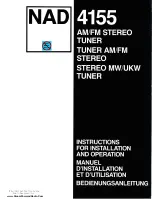
46
Appendix:
10.1 Helpful Hints for Successful Microplate Assays
Always insert the plate with well A1 on the upper left position.
Keep plates clean: measurements in microplates are made through the surface of
the plate and thus the surface should be as free as possible of debris, scratches and
smudges. Wipe the plate clean with a lint-free tissue if necessary.
Measurements may be affected by uneven or heterogeneous well contents. Visually
inspect the plate for foaming, uneven meniscuses, bubbles or particles in the well, all
of which can interfere with absorption. Centrifuge the plate if necessary to obtain a
homogeneous level in the wells.
Use a reference measurement for reducing measurement error caused by
interference from the plate material or contamination. (Use a reference wavelength
at which your molecule of interest does not absorb. Many assays recommend a
reference measurement at 620 nm).
When using plate frames for stripwells or single wells (breakable strips) check that all
strips and wells are pushed down completely and are level with the frame.
Keep the bottom of the plate dry. If liquid has contaminated the well bottoms or if
condensation is present, dry the surface with a lint-free tissue.
Use high quality optically clear 96-well microplates (such as virgin polystyrene) with
standard ANSI SBS footprint for the best results.
10.2 Troubleshooting and Frequently Asked Questions
Biochrom’s technical support team is available to answer all of your questions regarding your
EZ Read 800 Plus microplate reader:
E-mail:
Telephone
: +44 (0)1223 427890
Fax:
+44 (0)1223 427857
Please also see the support section of our website which is frequently updated with technical
and applications support information.
Below is a list of frequently asked questions and answers:




































